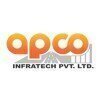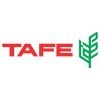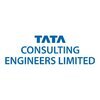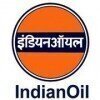Filter interviews by
Indian Steel & Power Interview Questions and Answers
Be the first one to contribute and help others!
Interview questions from similar companies

Assistant Manager - Production Interview Questions & Answers
SHYAM METALICS AND ENERGYposted on 16 Oct 2021
I applied via Company Website and was interviewed in Apr 2021. There were 3 interview rounds.
Interview Questionnaire
8 Questions
- Q1. What kind of role you do ?
- Ans. First of all I have been doing as a senior rounding is most important role in the plant and what kind of problems are there measure preventive maintenance I do.
- Q2. How to handle your job?
- Ans. I have divided area with operator for observation and I also obsessed everything.
- Q3. How are you controlling grinding?
- Ans.
Grinding is controlled through various measures to ensure efficiency and quality.
Regular monitoring of grinding process parameters such as speed, pressure, and temperature.
Implementing preventive maintenance schedules to keep grinding equipment in optimal condition.
Using quality control techniques like statistical process control to identify and address any deviations in grinding results.
Training and educating operator...
- Q4. What type of problems during running plant?
- Ans.
Various problems can occur during running a plant, such as equipment breakdowns, supply chain disruptions, quality control issues, and safety hazards.
Equipment breakdowns: Machinery can malfunction or break down, causing production delays.
Supply chain disruptions: Issues with suppliers or logistics can lead to shortages or delays in raw materials or components.
Quality control issues: Defects or inconsistencies in produ...
- Q5. What is the man things the iron ore beneficiation plant?
- Ans.
The iron ore beneficiation plant is a facility that processes iron ore to improve its quality and remove impurities.
The plant uses various techniques such as crushing, grinding, magnetic separation, and flotation to separate the valuable minerals from the gangue.
The beneficiation process aims to increase the iron content while reducing the impurities, making the ore suitable for steelmaking.
The plant may also include f...
- Q6. Working principle of Hydrocyclone?
- Ans.
Hydrocyclone uses centrifugal force to separate particles from a liquid suspension.
Hydrocyclone is a device used to separate particles from a liquid suspension.
It works on the principle of centrifugal force.
The suspension is fed tangentially into the hydrocyclone, creating a vortex.
The centrifugal force causes the heavier particles to move towards the outer wall of the hydrocyclone.
The lighter particles and the liquid ...
- Q7. What about Filter Press?
- Ans.
A filter press is a device used for solid-liquid separation in various industries.
It consists of a series of filter plates with filter cloths.
The plates are pressed together to form a sealed chamber.
A slurry is pumped into the chamber, and the liquid passes through the filter cloth while the solids are retained.
Once the filtration process is complete, the solids can be removed as a cake.
Filter presses are commonly used...
- Q8. What is your grinding media consumption per ton?
- Ans.
The grinding media consumption per ton refers to the amount of grinding media used to grind one ton of material.
Grinding media consumption per ton is a measure of efficiency in the production process.
It is calculated by dividing the total grinding media consumption by the total amount of material processed.
Lower grinding media consumption per ton indicates higher efficiency and cost-effectiveness.
Examples of grinding m...
Interview Preparation Tips

Assistant Electrical Engineer Interview Questions & Answers
Jindal Stainlessposted on 25 Mar 2021
I applied via Campus Placement and was interviewed in Jan 2022. There were 4 interview rounds.
Interview Questionnaire
1 Question
- Q1. Technical skills.
Interview Preparation Tips

Mechanical Maintenance Engineer Interview Questions & Answers
JSW Groupposted on 4 Aug 2021
I applied via Campus Placement and was interviewed in Jul 2021. There was 1 interview round.
Interview Questionnaire
2 Questions
- Q1. In my interview asked questions related to my intresting subject
- Q2. Give your first impression
Interview Preparation Tips

Interview Questionnaire
6 Questions
- Q1. Percentage of steel in pile
- Ans.
The percentage of steel in a pile varies depending on the type and design of the pile.
The percentage of steel in a pile can range from 0% to over 90%.
The type of pile (e.g. steel, concrete, timber) and its design (e.g. diameter, length, wall thickness) determine the percentage of steel.
Steel piles typically have a higher percentage of steel than other types of piles.
The percentage of steel in a pile can also affect its
- Q2. Pile built-up above cut off level as per IS code
- Ans.
Pile built-up above cut off level as per IS code
IS code specifies the maximum allowable pile length above cut off level
Pile length above cut off level should not exceed 3 times the pile diameter
Built-up pile above cut off level can cause structural instability and failure
- Q3. Pile vertical tolerance as per IS code
- Ans.
Vertical tolerance for piles as per IS code
As per IS 2911-1:2010, the vertical tolerance for piles is +/- 25mm
This tolerance is applicable for both driven and cast-in-situ piles
The tolerance is measured at the top of the pile and at intervals of 3m along the length
If the deviation exceeds the tolerance limit, the pile may need to be rejected or remedial measures taken
- Q4. Pile concrete consumption +- tolerance
- Ans.
Pile concrete consumption tolerance depends on various factors.
Pile diameter and length
Concrete mix design
Placement method
Quality control measures
Environmental conditions
Tolerance typically ranges from 5-10% of estimated consumption
Regular monitoring and adjustment of concrete consumption is necessary
- Q5. Unit weight of steel
- Ans.
Unit weight of steel is 7850 kg/m³
The unit weight of steel is the weight of a specific volume of steel
It is measured in kilograms per cubic meter (kg/m³)
The unit weight of steel is 7850 kg/m³
This value may vary slightly depending on the composition and manufacturing process of the steel
- Q6. Contractor MB related

Territory Sales Manager Interview Questions & Answers
Tractors and Farm Equipmentposted on 12 Oct 2020
Interview Questionnaire
4 Questions
- Q1. 1)Industry of the particular Market you are working in.
- Q2. Dealer funding status,PFS,Coverage, your past work experience.
- Q3. H How to start New Dealer scouting?.
- Ans.
To start new dealer scouting, research the market, identify potential dealers, and reach out to them with a compelling pitch.
Research the market to identify potential dealers
Create a list of potential dealers and prioritize them based on their fit with your product
Reach out to potential dealers with a compelling pitch that highlights the benefits of partnering with your company
Follow up with potential dealers to build ...
- Q4. How to increase MS
- Ans.
To increase MS, focus on building strong relationships with customers, providing excellent customer service, and offering competitive pricing.
Develop a deep understanding of the market and customer needs
Offer personalized solutions and recommendations
Provide ongoing support and follow-up to ensure customer satisfaction
Regularly analyze and adjust pricing to remain competitive
Invest in marketing and advertising to incre...
Skills evaluated in this interview

Jr. Engineer - Survey Interview Questions & Answers
Hindalco Industriesposted on 19 Nov 2020
I applied via Naukri.com and was interviewed in May 2020. There were 3 interview rounds.
Interview Questionnaire
4 Questions
- Q1. How do you control your team and if you have saved your company's cost then how?
- Q2. How do you control local issues?
- Q3. How to fix true North?
- Q4. What is your stregth?
Interview Preparation Tips

I applied via campus placement at Jharsuguda Engineering College, Jharsuguda and was interviewed in Sep 2019. There were 4 interview rounds.
Interview Questionnaire
3 Questions
- Q1. What is the difference between two stroke and four stroke
- Ans.
Two stroke and four stroke engines differ in their working cycles and efficiency.
Two stroke engines complete a power cycle in two strokes of the piston, while four stroke engines complete it in four strokes.
Two stroke engines have a simpler design and are lighter, but are less fuel efficient and produce more emissions.
Four stroke engines have separate intake, compression, power, and exhaust strokes, resulting in better...
- Q2. Different between diesel engine and petrol engine
- Ans.
Diesel engines and petrol engines differ in fuel type, ignition process, compression ratio, and efficiency.
Fuel type: Diesel engines use diesel fuel, while petrol engines use gasoline.
Ignition process: Diesel engines use compression ignition, while petrol engines use spark ignition.
Compression ratio: Diesel engines have higher compression ratios than petrol engines.
Efficiency: Diesel engines are generally more fuel-eff...
- Q3. What is the function of turbo charger
- Ans.
A turbocharger is a device that increases the efficiency and power output of an internal combustion engine.
A turbocharger uses exhaust gases to drive a turbine, which in turn drives a compressor to force more air into the engine.
By increasing the amount of air entering the engine, a turbocharger allows more fuel to be burned, resulting in increased power.
Turbochargers are commonly used in diesel engines and high-perfor...
Interview Preparation Tips

Program Manager - corporate Strategic Initiatives Interview Questions & Answers
S&P Globalposted on 22 Nov 2019
I applied via Naukri.com and was interviewed in May 2019. There were 3 interview rounds.
Interview Questionnaire
2 Questions
- Q1. What would you do in a situation where you are depended on others for the work to be completed?
- Q2. How will you manage if your manager is away? How important is team culture for you?
Interview Preparation Tips
I think the key is to check out the hierarchy of the people in the org that you know you are going to meet and try and answer according to what sort of an answer they might expect from you. Think from their POV. The endless line of interviews was exhausting but worth the wait.

I was interviewed in May 2019.
Interview Questionnaire
4 Questions
- Q1. Why do want to join BHEL?
- Q2. What is collective bargaining?
- Ans.
Collective bargaining is a process of negotiation between employers and employees, usually through their respective representatives, to determine the terms and conditions of employment.
It involves a group of employees bargaining with their employer for better wages, benefits, and working conditions
The process is usually facilitated by a union or other employee representative
The goal is to reach a mutually beneficial ag...
- Q3. What are some important acts related to skill development?
- Q4. Some questions related to my previous job in Tata Trusts and about my internships in Siemens and INBEF.
Interview Preparation Tips

Management Trainee Interview Questions & Answers
Larsen & Toubro Limitedposted on 12 Jan 2015
Interview Questionnaire
2 Questions
- Q1. High Strength Concrete with special reference to Fibre Reinforced Concrete- Small Technicalities such as the strength, ductility etc.
- Q2. Basic Details and how'd I be an asset to the company
Interview Preparation Tips
Experience: Fairly easy, those preparing for CAT would ace the first section pretty easily. For the second section, you'd require an ample experience of reading standard comprehension passages. Online reading resources such as the Op-Eds on TIME, The Hindu, NYT would help big time.
Tips: Be composed and conscious of the time. This test is all about pacing ahead of time and hence a hands on practice on all the relevant sections would really help. There are a good amount of resources for both the sections on the web. So be calm and prepare good.
Duration: 120 minutes minutes
Round: Interview
Experience: It was based on what I had mentioned on the pre-interview proforma, which, they usually ask every candidate to fill. A couple of bullets from my resume provided them enough material to frame their questions. Since L&T ECC heavily deals in concreting operations throughout its projects, having studied FRC greatly helped my case. The experience during my internship also helped me to elaborate my experience. They asked some basic questions pertinent to the grade of the concrete, cement employed and the ductility achieved and some general questions such as what are its advantages over normal concrete and how would it help me in contributing positively to their company.
Tips: Nothing much! Just prepare your resume bullet points in and out. Do not add anything new on the proforma. You never know that it might just go against what you say in the interview. People usually flounder in interview because they try to condense a lot of information in a short span of time. Instead just try to be concise and explicit in you writing so that you can elaborate your experience exactly the way you may want to elaborate in the interview. Strictly adhere to the lines mentioned in the proforma.
Round: Interview
Experience: Standard replies did good for me. Just try to mention all the positives in your resume. This is where you will be, more often than not, given opportunity to elaborate on your extracurricular activities and responsibilities. L&T especially with their MT profilers would always want a diversified group who can carry out both Management and Engineering with ease.
Tips: Nothing much. If you survived till here you are highly likely to get through this as well. All the best!
General Tips: Stay Calm. You may not get through companies which your counterparts in Computer Science or other branches would. But if you keep fretting over your past you'd probably ruin your present and it will drastically affect your future. Don't judge yourself by the package you get in the starting. Companies like L&T usually ground their freshies but the longer you stay the more you are of value to the Company. Ask anyone who's been around in the ECC for more than 10 years and they'd tell you the rest. Stay used to of being awake till the wee hours of the morning (for placements at least) as I was not. It did hamper my chances on the first night of the placement. (which is an entirely different experience to share) :P
Skill Tips: Just be prepared with all the tests that you performed in your Concrete/Materials Laboratory. Concrete Mixers, Bleeding prevention mechanisms etc.
Skills: Practical Expertise with your laboratories
College Name: IIT Guwahati
Motivation: L&T ECC is known as one of the most gritty companies and provides an avenue for being a party to challenging projects. The work, its type, and its impact is what drove me personally to apply to it.
Funny Moments: I don't know if it sounds funny, but after sitting in a big shot finance company on day zero at 1 am in the night, and finally succumbing in round 3, it was almost a draught of 7 days before this opportunity came. And interestingly I had not applied for any other company. So, in the hindsight, I actually find myself lucky enough to have got through. Had this gone then.... :D
Tell us how to improve this page.
Interview Questions for Popular Designations
Interview Questions from Similar Companies
Indian Steel & Power Reviews and Ratings
based on 2 reviews
Rating in categories

Larsen & Toubro Limited

Tata Steel

Shapoorji Pallonji Group

Cummins
Calculate your in-hand salary
- Home >
- Interviews >
- Indian Steel & Power Interview Questions


